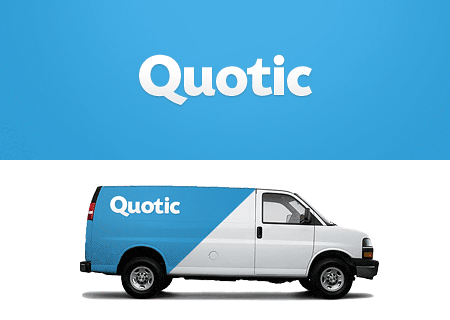This guest post is by Glee of Creative Fashion.
I was a high-school Maths teacher for eight years and for all those years, my life evolved in writing lesson plans, producing teaching materials and worksheets, dealing with parents, teaching some well-behaved and some rude students, and pleasing demanding bosses. When an opportunity came for me to finally be a full-time blogger, which allows me to be my own boss and set my own schedule and calendar, it was a dream come true.
Yet, as it turn out, building a website and establishing myself as an authority isn´t all fairy tales.

Copyright AZP Worldwide - Fotolia.com
I was a part-time blogger for two years, juggling my full-time day job, after-school tutorials, and blogging until late midnight every day. My first blogs were built through a free blog platform, on which I learned HTML, SEO techniques, and a little online marketing. I had enough experience and I was quite ready to do blogging full-time before I decided to quit my job.
I built my professional blogs and now I’m working toward my dream of making them big: I’m officially a full-time blogger. But there are stumbling blocks that I had to deal with more than once in those first few months of pro blogging; here are the techniques I used to beat them.
1. Balance your freedom with a solid schedule
The good thing about full-time blogging is you don’t have a boss. And the bad thing about full-time blogging is you don’t have a boss.
The freedom that full-time blogging offers is what makes people want to become full-time bloggers. However, it’s the same freedom that sends them to failure fast if they aren’t careful.
I’m a stay-at-home wife and a self-confessed online entrepreneur (a fancy name for a blogger), and when my husband kisses me good-bye in the morning, I’m still in bed … and so tempted to go back to sleep.
It takes discipline to beat this behavior. I soon realized that if I go to work late, I can’t keep working until late. When my husband comes home, I have to start preparing dinner—plus there’s a couple of hours for our bonding time which include going to the gym. I clean the kitchen after dinner, and then it’s already very late at night. So basically my job ends at 5p.m. I can only do a little work on my blog late at night.
This urged me to create a schedule and to stick to it. When hubby goes to work at 7:45 in the morning, I’ve got to be fixing the bed, then have breakfast, shower, do a little housework, and be at my desk by 9a.m. I get a break for lunch around 1p.m. and the hard work ends at 5p.m. If I’m really good, I can do a little more work after dinner.
The bottom line: create a daily schedule and stick to it. Treat blogging as a real business.
2. Learn how to deal with discouragements and frustrations
When I see my traffic numbers start to rise, I feel so happy. It gives me energy to work harder. This is especially true when I see my Alexa rank increase.
However, there are times when the scenario is reversed. I get up in the morning excited to see how my site is doing, thinking, "Did it increase from last night’s Alexa rank?" But I’m disappointed if it didn’t. In fact, if the rank has decreased, I’ll feel sad and my energy levels will drop.
Another discouraging experience is seeing my subscribers leave. It´s fun to see them increase, but it´s never fun to see them decrease. If I’m not careful, I am really emotionally affected by these events. I keep asking myself, “What made them leave?”
What to do? I figure that it’s best to apply sportsmanship in this business, and not to take it too personally. Some people are happy to join your list but sometimes, for some reasons, they no longer need your service, so they have to go. It’s not always all about you so there’s no need to mourn for it.
However, if the percentage of decline is quite big, it makes me re-evaluate my site. Am I posting enough quality content in a day? Which content items are sending me most of the traffic and why do they perform better? What do my readers want to learn from me? And so on.
The bottom line: Don’t take discouragement too personally, and don’t let it affect you negatively. Use it to re-evaluate and improve your site.
3. Don’t succumb to burnout
Burnout is one of the most common enemies of full-time bloggers. There’s just too much to do! You become overwhelmed if you try to do everything at once. Not good! When you suffer from burnout, you no longer feel happy doing what you love. How can you avoid it?
I created a "To-do" list for my website and I order the items according to priorities and timeframes. I learned to set a target each day, each week, and each month. For example, guest posting here at ProBlogger is my "To-do" task this week, and I had to set time to write this post, inserting it in my everyday schedule. The "must-do" tasks are done right away, while those in the long-term list are done little by little each day.
If I don’t escape burnout and it strikes me, I find ways to unwind. For example, I focus my energy right now on my fashion blog. At times when sitting at my desk and seeing HTML makes me feel ill, I grab my camera, dress up, leave the house and do outfit pictorials. This allows me to take some fresh air and re-charge my energy. If I’m not into dressing up, I take my fashion magazines and do some reading instead.
The bottom line: create a "To-do" list and learn to prioritize your tasks. If burnout strikes, find ways to refresh your mind. Do something that makes you happy other than blogging.
4. Be prepared to troubleshoot when technical problems hit your site
I have twice survived the horror of hacking and viruses—and I didn’t escape without trauma. There was one day when my then-fiancé (now husband) made a long-distance call from Germany to infrom me that something was wrong with my site. It didn’t display properly on his monitor, everything was in disarray, and there were some scripts that would flash on the screen before my messy website loaded. To my horror, my friends confirmed via Facebook that, indeed, they couldn’t access my website. But it was displaying all right in my monitor. No matter how I tried, it really worked just fine in my computer. I’d been hacked!
I immediately did a complete malware scan and started to troubleshoot. I got plenty of "Cannot modify header information" messages, which I was completely unprepared for. I was crying my eyes out because the solutions that I googled didn´t work. I spent two days hunting down the illegal scripts before I finally found their file location.
The next attack was through my Feedburner service, which was corrupted by a virus so that nobody could access it. This time, I spent a day troubleshooting before I was able to again locate and remove the illegal scripts.
Then one morning I received an email from my webserver host informing me that they did a cleanup of my FileZilla because they found some suspicious activities. They also informed me that they’re available 24 hours if I need help and that I could access them via chat.
How come I didn´t know that? Those days of troubleshooting could have been reduced to hours if I only used some help! Now I know better.
The bottom line: Full-time blogging isn’t just about writing, publishing, promoting and designing layouts; it’s also about troubleshooting. Therefore, be prepared to roll up your sleeves when virus attacks or other technical errors arise, but be certain to make use of the tools and help that are at your disposal.
5. Be inspired by big brands and sites, but don’t compare your blog to theirs
Commenting and visiting other blogs in your niche is one way of getting social and promoting your site. As you do it, you encounter blogs that are already big, with a wide following. It’s easy to get inspired and jealous at the same time. You tend to compare yourself and your site to theirs. However, remember that even big brands took time to bring their website to where it is now. Tell yourself that you, too, someday will become as big as them. Think big, get inspired, and work hard.
The bottom line: Learn from the leaders in your niche, and be inspired, but never compare yourself to them. Take your time.
6. Give yourself a pat on the back for every little achievement
Sitting in your own home office, alone, for the whole day is never easy. Much harder is to stay focused and committed to blogging all the time. It’s easy to miss the work community that you once had—the lunches with your office mates and the after-work shopping at the end of the month. You turned your back to those parts of life because you opted to carve your own territory on the Internet. That, by itself, is an achievement. Not everyone can do it, so reward yourself for that.
Also, before you close your laptop each day, think of both the little and big accomplishments you’ve made for the day and be thankful. Congratulate yourself. It helps in maintaining your faith.
The bottom line: It’s difficult to quantify how much you’ve done for the day. But your mind and self-esteem need to be fed every day. By appreciating yourself for all the little achievements you’ve made on your site, you are helping to maintain your drive.
Once you’ve survived the first three months, you have a better grip of full-time blogging and you know better how to set and follow a schedule. You’re more equipped to overcome discouragements as you blog your way to success.
How did you survive the first three months of full-time blogging? What stumbling blocks did you meet and how did you overcome them? What are your techniques for staying focused on achieving your goals?
Glee Josko teaches women how to be creative and joyful fashionistas through her blog, Creative Fashion. She also explores the ways to achieve happiness in extra-challenging marriages such as intercultural marriage at Offbeat Marriage.
Originally at: Blog Tips at ProBlogger

6 Tips to Help You Survive Your First 3 Months of Pro Blogging
























.jpg)